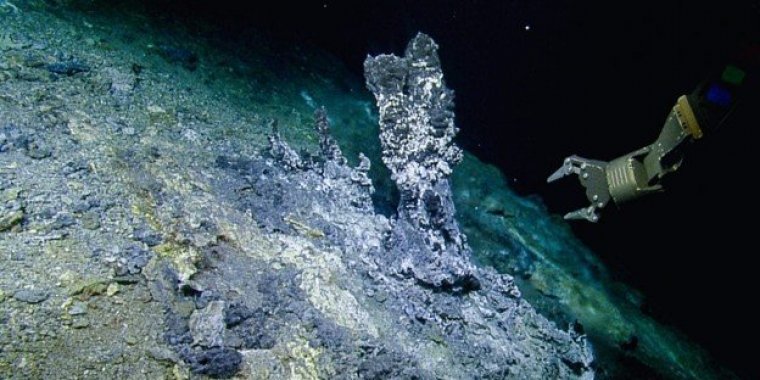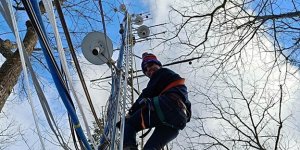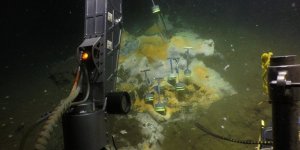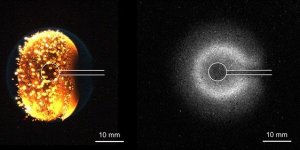| News / Science News |
Study examines role of deep-sea microbial predators at hydrothermal vents
Hydrothermal vent fluids from the Gorda Ridge spreading center in the Pacific Ocean create a biological hub of activity in the deep sea. There in the dark ocean, a unique food web thrives not on photosynthesis but on chemical energy from the venting fluids. Among the creatures having a field day is a diverse assortment of microbial eukaryotes, or protists, that graze on chemosynthetic bacteria and archaea.

The Apollo Vent Field at the northern Gorda Ridge, where samples were collected. Photo: OET/Nautilus Live
This protistan grazing, a key mechanism for carbon transport and recycling in microbial food webs, exerts a higher predation pressure at hydrothermal vent sites than in the surrounding deep-sea environment, a paper reports.
"Our findings provide a first estimate of protistan grazing pressure in hydrothermal vent food webs, highlighting the important role diverse protistan communities play in deep-sea carbon cycling," according to the paper.
Protists serve as a link between primary producers and organisms higher in the food-chain. Their grazing is a key mechanism for carbon transport and recycling in microbial food webs, found scientists at the Woods Hole Oceanographic Institution.
The researchers discovered that protists consume 28-62% of the daily stock of bacteria and archaea biomass in discharging hydrothermal vent fluids at the Gorda Ridge some 200 kilometers off the coast of southern Oregon.
The scientists estimate that protistan grazing could account for consuming or transferring up to 22% of carbon that is fixed by the chemosynthetic population in the discharging vent fluids.
Though the fate of that carbon is unclear, "protistan grazing will release a portion of the organic carbon into the microbial loop as a result of excretion, egestion and sloppy feeding," and some of the carbon will be taken up by larger organisms that consume protistan cells, the paper states.
The scientists said that quantitative measurements are important to understanding how food webs operate at pristine and undisturbed vent sites.
"The chemosynthetic basis of hydrothermal vent ecosystems and the role of symbiosis are well-established," says Mike Sieracki, a program director in NSF's Division of Ocean Sciences. "The microbial food web there has not been as well-studied. This work shows the important role these tiny predators play." (National Science Foundation)





